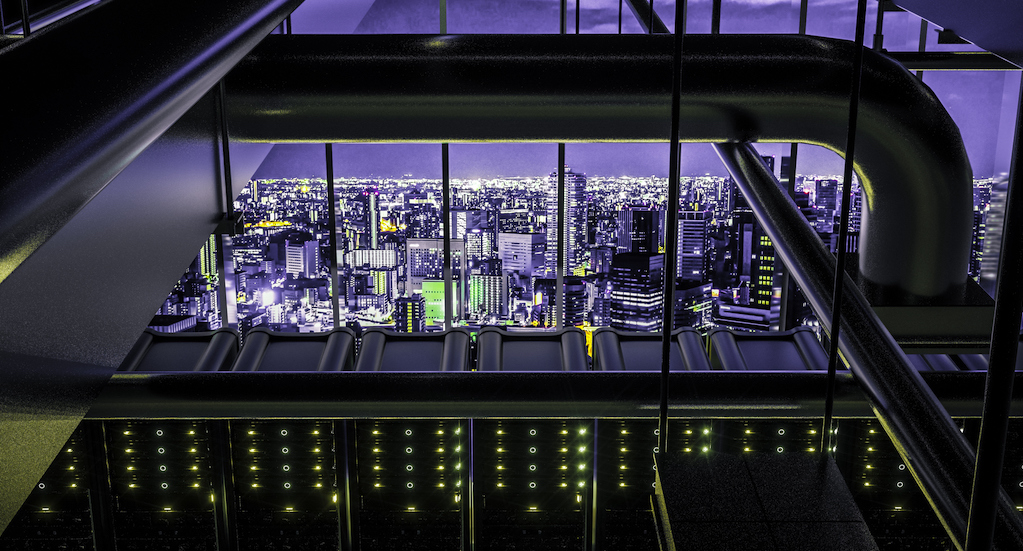
Staying Cool As Density Demands Grow and Technology Evolves
Some good news heading into 2021: Big data growth is requiring businesses to offload IT infrastructure to colocation, or multi-tenant, data centers. And now that you have decided to make the move, you face a critical challenge: How your colocation cooling strategy can keep pace with advances in server technology and increased density demands. And an equally important question: How can the colo space accommodate customers’ specific needs?
As an IT manager planning the big move...
- You know all about adequate climate control
- You know how to maximize space
- You know how power consumption affects energy costs (and how those costs are growing)
- You know the inefficiencies of computer room air conditioner (CRAC) and computer room air handler (CRAH) infrastructure
- You know uptime is critical
That is a lot of knowledge and expertise. It is important, however, to consider what do you still need to know when it comes to cooling your colocation deployment? Read on, but keep in mind that both you and your customers need to work together to create a solution you can agree on and implement.
#1 Thing You Need to Know: The Numbers Are Stacked Against You
This section is a quick review for many colo managers, but it definitely sets the stage:
- Up to 40% of all data center energy use goes directly to cooling.
- An average rack power density of 11kW per rack (or higher) is expected soon, according to a 2019 survey by 451 Research.
- The data center cooling market is growing to meet growing needs; 3%-12% annually from 2020–2025.
One of the main reasons why customers abandon their on-premise data solutions in favor of colocation services is because of the high infrastructure cooling costs. The pressure is clearly on to get results.
#2 Thing You Need to Know: Liquid Cooling Supports Higher Thermal Loads
“As heat densities rise, liquid solutions become more attractive.” — U.S. Department of Energy (DoE).
No surprise. So, here is the question: “How can you cool the successive generations of high-performance processors?” Various liquid cooling solutions handle rack power densities from 5kW–80k; some even push the 100kW mark. That 11kW average density from above doesn’t seem quite so daunting now.
Air-based cooling methods involve mixing huge amounts of cold air with warm air created by the equipment. And while this is more than adequate for most deployments, it may not be right for YOUR colocation installation. Liquid cooling targets the sources of heat at the source — at the row (or rows) of racks or at individual footprints. The short story: liquid cooling systems can confidently increase installation densities, ensure maximum uptime, and take advantage of savings opportunities.
It is critical to understand the basic types of liquid cooling and their effectiveness for different infrastructures and thermal loads.
- Row-based cooling (also called in-line or in-row), focuses cooling on a row of enclosures. The airflow paths, from the in row units to adjacent IT enclosures and devices, are short and clearly defined, reducing fan energy and requiring 80% less air flow.
- Direct-to-chip, as its name says, brings safe, non-flammable dielectric fluid directly to the chip. The fluid absorbs the heat, turns into vapor, and carries heat out and away from IT equipment. This method can dramatically reduce cooling costs within your facility.
For the average colocation facility manager, liquid cooling systems may be able to open up spaces that may have been too small, did not have enough air cooled capacity, or were not properly configured to support higher thermal loads. If you hate to see all that space go to waste, high density cooling may let you fill it up.
#3 Thing You Need to Know: Scalability is Key
As mentioned, densities are growing exponentially, which puts a large burden on systems. It is very important to think beyond today and prepare to handle tomorrow’s densities that you will surely be forced to manage. Are you confident the cooling system is ready?
Can you scale up without using a liquid cooling system? Maybe yes, maybe no. What there is no question about is that it is much simpler to add another cabinet that features liquid cooling to expand rack and cooling capacity. Advanced modular enclosures come with many accessories pre-installed, such as cable management and PDUs, which makes rapid scaling easy.
Do you have sufficient heat removal capacity? Expect an overall thermal load increase as you add enclosures and/or more powerful devices. Keep in mind that any added heat needs to be removed using your existing infrastructure.
#4 Thing You Need to Know: A Top Tool Is Infrastructure Management
Today’s installations generate an incredible amount of information on power and cooling demand and usage. Truly efficient facilities use that data to better understand usage patterns and any potential trends. This provides the opportunity to better manage data center power and cooling needs moving forward.
Low traffic period? Cycle servers down. See an upcoming time of greater power and cooling need? Be ready and adjust. By properly analyzing the right data, data centers can improve efficiency scores. Even more customer-friendly, some advanced intelligence tools allow customers of colocation centers to monitor server performance in real time.
#5 Thing You Need to Know: A Cooling Expert is a Valuable Partner
Data center IT cabinets are an investment that pays off with peace-of-mind protection of valuable computing and networking equipment. When considering an enclosure platform manufacturer, ask if they also provide cooling solutions. If they do, you may have found a strategic partner that delivers not only products but also engineering support and long-term value.
Expect to have in-depth conversations about your future density needs. You have to be prepared for the next IT components and any challenges they present. Discussions with a partner should address handling new technology to meet your long-term needs. If you are not hearing the right answers to your questions, beware.
#6 Thing You Need to Know: Advanced Enclosures are Worth the Investment
It is possible to scale along with growing data needs and not worry about how you’ll control temperature, humidity, and airflow (which directly affects uptime). Advanced enclosures, working in concert with the high density systems described above, can address specific requirements without impacting existing environment or infrastructure.
The new TS IT Pro enclosure from Rittal integrates or retrofits with supplemental row- and rack-level cooling solutions. This flexible and scalable rack system is designed to handle the IT designs of the future. Here are more highlights:
- Scalability supports high installation and increasing thermal densities
- Frame construction with significant load bearing capacity meets “ship loadable” system demands
- Installation is simplified thanks to accessories installed prior to shipping
- U.S.-made, easy to configure, easy to order
Get more guidance for your colocation data center by downloading Rittal’s free Colocation Infrastructure Handbook.


